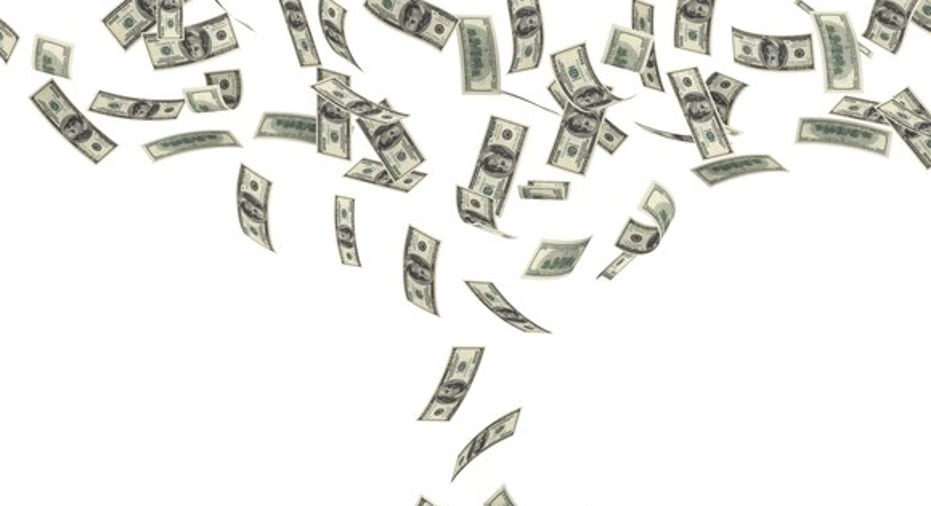How Pfizer Inc. Makes Most of Its Money

Pfizer Inc. (NYSE: PFE) made a whopping $52.8 billion last year. To put that amount into perspective, imagine a stack of $1 bills that reaches the height of Mount Everest. Then add another 651 stacks of the same height on top of that stack. That's how much money Pfizer made in 2016.
Where does all of that money come from? Pfizer generates revenue in quite a few ways, but here's how the company makes most of its money.
Image source: Getty Images.
The segment with the mostest
Pfizer is organized into two business segments. The innovative health segment develops and markets prescription drugs and vaccines for which Pfizer retains intellectual property rights. This segment also includes Pfizer's consumer healthcare products. The essential health segment is responsible for selling legacy products that have lost or will soon lose patent exclusivity, branded generics, generic sterile injectable products, and biosimilars. In addition, the segment includes a research and development unit and a contract manufacturing business.
As you might expect, the innovative health segment generates more revenue than the essential health segment does. In 2016, Pfizer's innovative health business posted sales of nearly $29.2 billion. The essential health segment recorded sales of more than $23.6 billion.
What might be surprising, though, is that the essential health segment actually claims a higher profit margin than innovative health does. Last year, essential health produced income from continuing operations before taxes of $12.9 billion -- a profit margin of 54.6%. Innovative health generated income from continuing operations before taxes of $15.9 billion, which reflects a slightly lower profit margin of 54.3%.
Focused internally
Where is the most money made within the biggest moneymaking segment? Pfizer groups its innovative health products into six categories: internal medicine, vaccines, oncology, inflammation & immunology (I&I), rare disease, and consumer healthcare. The category that generates the highest revenue is the company's internal medicine drugs.
Sales for Pfizer's internal medicine drugs totaled nearly $8.9 billion in 2016. The company's vaccines came in second, with sales of more than $6 billion. Oncology drugs generated sales of nearly $4.6 billion last year. Rounding out the list were I&I with sales of $3.9 billion, consumer healthcare with sales of $3.4 billion, and rare disease drugs with sales of almost $2.4 billion.
Pfizer's internal medicine category includes three of the company's nine blockbuster drugs. It also claims two of the drugmaker's products that are growing sales the fastest -- smoking cessation aid Chantix and blood thinner Eliquis, both of which posted sales increases of 26% in 2016.However, Pfizer is experiencing even greater sales growth with cancer drugs Ibrance and Xtandi, as well as rheumatoid arthritis drug Xeljanz.
Biggest blockbuster
The top-selling internal medicine drug is Lyrica. Pfizer's innovative health segment reported 2016 sales of nearly $4.2 billion for the drug, which treats epilepsy, post-herpetic neuralgia and diabetic peripheral neuropathy, fibromyalgia, and neuropathic pain due to spinal cord injury. An older formulation of Lyrica is also marketed by the essential health segment. This version of the drug made $801 million last year.
However, Pfizer's biggest blockbuster isn't Lyrica. That honor goes to Prevnar 13.Sales for the pneumococcal vaccine totaled $5.7 billion in 2016.
Three other drugs could potentially come close to that level down the road. Ibrance made $2.1 billion last year, but analysts think the drug could reach peak annual sales of up to $5 billion. Prostate cancer drug Xtandi could also hit peak sales of nearly $5 billion.Bavencio, which recently won approval for treating metastatic Merkel cell carcinoma,might even surpass Prevnar's 2016 sales level if the drug is successful in additional indications. However, Pfizer will split the revenue for the drug with partnerMerck KGaA.
Where the money goes
Investors should be as interested in where Pfizer's money goes as they are in where its money comes from. A significant amount was spent last year on acquisitions. Pfizer bought Medivation for $14.3 billion and Anacor for $4.9 billion. The company picked up Xtandi with the former deal and atopic dermatitis drug Eucrisa with the latter deal.
Pfizer used $7.3 billion to pay out dividends. With a current yield of 3.75%, most shareholders are probably happy about that expenditure. In addition, the company bought back $5 billion of its stock.
You could look at all of this spending in another way. Pfizer dedicated nearly 399 Mount Everest-sized stacks of $1 bills to reward investors and pave the way for higher earnings growth in the future.
10 stocks we like better than PfizerWhen investing geniuses David and Tom Gardner have a stock tip, it can pay to listen. After all, the newsletter they have run for over a decade, Motley Fool Stock Advisor, has tripled the market.*
David and Tom just revealed what they believe are the 10 best stocks for investors to buy right now...and Pfizer wasn't one of them! That's right -- they think these 10 stocks are even better buys.
Click here to learn about these picks!
*Stock Advisor returns as of April 3, 2017.
Keith Speights owns shares of Pfizer. The Motley Fool has no position in any of the stocks mentioned. The Motley Fool has a disclosure policy.